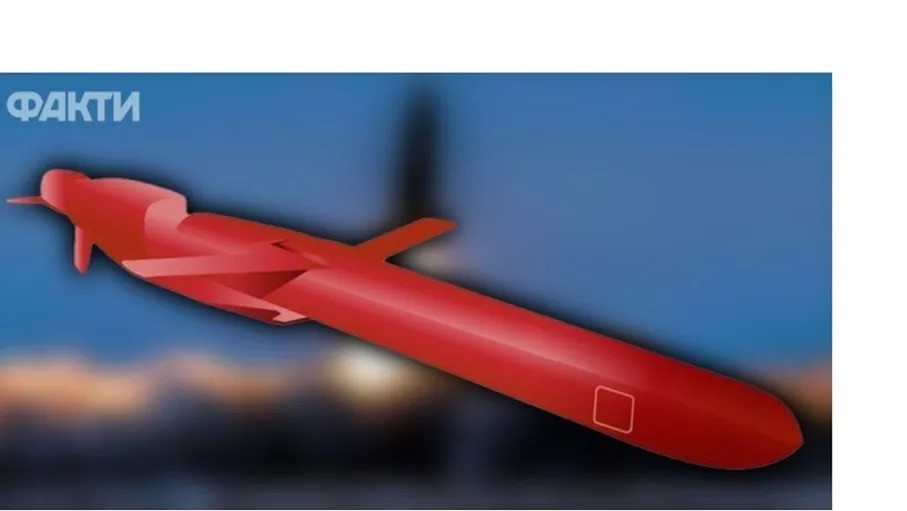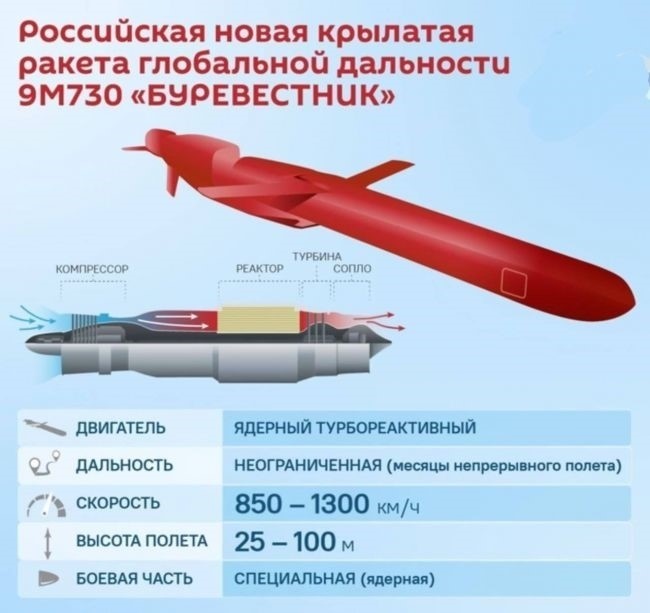Russian President Vladimir Putin said on Sunday that Russia tested its nuclear-powered missile “Burevestnik” (Burevestnik).
Putin added: “We have confirmed the reliability of the Russian nuclear shield, and the strategic forces capable of guaranteeing the national security of Russia and the Union State (Russia–Belarus). And as we have said previously — and this is well known to all military experts — what is called the ‘modernity’ of our armed forces, or rather our nuclear deterrent forces, has reached the highest possible level. I can say without exaggeration that it is, at least, superior to its counterparts in all other nuclear countries.”
اضافة اعلان
Putin continued: “Regarding the exercises that were carried out, I would like the Chief of the General Staff [Valery Gerasimov] to report on another event I briefly mentioned in my opening remarks, which is the test of the cruise missile ‘Burevestnik’ with unlimited range and equipped with a nuclear engine. I know I have reports from industry and assessments from the Defense Ministry. It is a unique product with no equal in the world.”
He stressed that “the decisive tests have now been completed.”
He noted that “there is still a lot of work ahead of us before placing this weapon into combat service,” adding: “This is understandable — all regulatory procedures must be completed — but the important thing is that the main objectives have been achieved, as I understand. And I would like to hear the Chief of the General Staff’s view on that.”
Below are the key facts about this weapon:
The 9M730 Burevestnik — whose name in Russian means “storm‑petrel” — is a ground‑launched cruise missile that flies at low altitude. It is capable not only of carrying a nuclear warhead but also of being powered by nuclear energy. NATO designates it SSC‑X‑9 Skyfall.
Putin first unveiled the project in March 2018, saying the missile had unlimited range and could evade U.S. missile‑defense systems.
However, a number of Western experts doubted its strategic value, saying it added no new capabilities for Moscow and could cause radioactive contamination along its flight path.
Putin said the weapon is “unique,” while Russia’s Chief of the General Staff, General Valery Gerasimov, told Putin that in a test on October 21 the missile flew 14,000 kilometers (8,700 miles) and remained airborne for about 15 hours.
He explained that it relied on nuclear power during its flight, can bypass any defensive system, and has unlimited range. The missile’s nuclear propulsion system is designed to allow it to fly farther and for longer durations than conventional turbojet or turbofan engines, which are limited by the amount of fuel they carry.
This enables it to “loiter” for long periods before striking its target.
According to the Nuclear Threat Initiative (NTI), a U.S. non‑profit security organization, the missile could stay aloft for days. In a 2019 report NTI said: “When in operation, Burevestnik carries a nuclear warhead (or more), circles the globe at low altitude, evading missile‑defense systems and terrain, and then drops its warhead at a location that is difficult to predict.”
But some Western experts argue that the missile’s subsonic speed makes it easier to detect, and that it becomes more vulnerable the longer it remains airborne..


In response, Russian military expert Alexey Leonkov wrote in 2019 that Burevestnik’s role would be to eliminate the “remnants” of enemy command centers, military bases, factories, and power stations after Russia had launched its intercontinental ballistic missiles — at which point the enemy’s air‑defense systems would be incapacitated and unable to intercept it.
He said Burevestnik “will return aggressive states to the Stone Age,” completing the destruction of their military and civilian infrastructure.
According to the International Institute for Strategic Studies (IISS), which in 2021 cited a specialized Russian military magazine, the missile’s theoretical range reaches 20,000 kilometers (12,400 miles), meaning it could be launched from anywhere in Russia to strike targets inside the United States.
The same magazine indicated the missile’s flight altitude is between only 50 and 100 meters (164–328 feet), far lower than conventional cruise missiles, making it harder for air‑defense radars to detect.
A 2020 report by the U.S. Air Force’s National Air and Space Intelligence Center said that if Russia succeeds in fielding Burevestnik, it would give Moscow “a unique intercontinental capability.”
Experts estimate the missile is initially launched by a small solid‑fuel rocket that accelerates it while pumping air into an engine containing a miniature nuclear reactor, where the air is heated and expelled (and may become radioactive) to produce forward thrust.
But Burevestnik’s test record is poor: several earlier tests reportedly failed, according to Western experts. In 2019, at least five Russian nuclear scientists were killed in an explosion and radiation leak during a test in the White Sea; U.S. intelligence sources said they believed the incident was part of a missile test.
Putin later awarded the widows of the scientists high state honors, saying the weapon they were developing was “unrivaled in the world,” although he did not name it at the time.
It is reported that Burevestnik is a strategic cruise missile with unlimited range, powered by a nuclear propulsion system. It is designed to destroy high‑value strategic targets, including fortified shelters.
The missile is said to be invisible to enemy radar and can be detected only by specialized satellites during launch and the acceleration phase.
Burevestnik (9M730) is one of Russia’s most secretive and controversial weapons projects. Reuters (October 26, 2025) described it as a nuclear‑powered cruise missile with unlimited range capable of flying thousands of kilometers at very low altitude to evade radar.
According to reports from EADaily and statements by President Vladimir Putin, the missile is equipped with a closed‑cycle nuclear reactor cooled by liquid sodium, giving it the capability to fly up to 14,000 kilometers during 15 continuous hours — figures that were reportedly confirmed in the latest test in October 2025. Its length is about 10–12 meters, and the warhead is estimated at around 400 kilograms with a yield close to 500 kilotons, according to the IISS.
Russian magazine Naked Science (October 2025) noted that the missile’s straight‑wing design makes it subsonic, but more stable and safer than earlier U.S. designs such as the “Pluto” project, because its nuclear propulsion system does not emit radioactive gases into the atmosphere.
According to military expert Alexey Leonkov, Burevestnik is used as a “second‑strike” weapon capable of retaliating after an initial attack when the enemy’s defenses are paralyzed, thus playing a central strategic role in balancing nuclear deterrence between Russia and the United States.
In October 2023, Putin announced a successful test of the missile.
In 2024, two U.S. researchers said they had identified a likely deployment site for the missile near a nuclear warhead storage facility known as “Vologda‑20” or “Chipsara,” located about 475 kilometers north of Moscow. — Reuters




